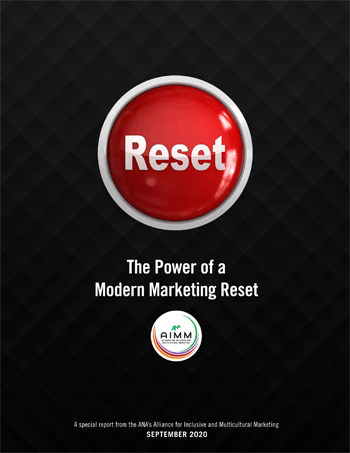Are You Ready for the New Era of Consumer Data?
![]() The next phase of the data game is upon us. Winning will require a new playbook.
The next phase of the data game is upon us. Winning will require a new playbook.
![]() The next phase of the data game is upon us. Winning will require a new playbook.
The next phase of the data game is upon us. Winning will require a new playbook.
 A study on how the pandemic is affecting the world’s leading brands.
A study on how the pandemic is affecting the world’s leading brands.
 The experience of the fast movers out of the last recession teaches leaders emerging from this one to take thoughtful actions to balance growth, margins, and optionality.
The experience of the fast movers out of the last recession teaches leaders emerging from this one to take thoughtful actions to balance growth, margins, and optionality.
 In the first half of 2020, revenues from Latin music in the U.S. grew 18.6% to $296.1 million at retail value, the fourth consecutive year of double digit percentage growth. Latin music continued to grow its share of overall U.S. music revenues to 5.2%.
In the first half of 2020, revenues from Latin music in the U.S. grew 18.6% to $296.1 million at retail value, the fourth consecutive year of double digit percentage growth. Latin music continued to grow its share of overall U.S. music revenues to 5.2%.
 In looking at how streaming video consumption has grown this year, Easter Sunday stands out as the peak streaming day that Nielsen has ever measured. From there, especially as stay-at-home orders eased and warmer weather came around, total media usage began to normalize. That doesn’t mean, however, that media consumption today looks like what it did before March, especially when you look at the video streaming space. In fact, Brian Fuhrer, SVP, Product Strategy at Nielsen, says the streaming enablement that took place during the stay-at-home periods was like multiple holiday enablement periods all at once.
In looking at how streaming video consumption has grown this year, Easter Sunday stands out as the peak streaming day that Nielsen has ever measured. From there, especially as stay-at-home orders eased and warmer weather came around, total media usage began to normalize. That doesn’t mean, however, that media consumption today looks like what it did before March, especially when you look at the video streaming space. In fact, Brian Fuhrer, SVP, Product Strategy at Nielsen, says the streaming enablement that took place during the stay-at-home periods was like multiple holiday enablement periods all at once.
 Never has trusted news been more important in our society. Over the past year we have seen significant growth in news consumption as we increasingly rely on news to keep us safe, connected, and informed. The IAB study sought to understand the brand impact of advertising in the news.
Never has trusted news been more important in our society. Over the past year we have seen significant growth in news consumption as we increasingly rely on news to keep us safe, connected, and informed. The IAB study sought to understand the brand impact of advertising in the news.
 At many US consumer-packaged-goods (CPG) companies business has been turned on its head. Even for companies in categories that experienced rapid growth, the past several months have been dizzying.
At many US consumer-packaged-goods (CPG) companies business has been turned on its head. Even for companies in categories that experienced rapid growth, the past several months have been dizzying.
 This report corroborates the demise of the Total Market approach, a marketing process that short-changed Multicultural & Inclusive Marketing growth, and resetting marketing as we have known it.
This report corroborates the demise of the Total Market approach, a marketing process that short-changed Multicultural & Inclusive Marketing growth, and resetting marketing as we have known it.
 Marketing organizations must adapt to the rapidly changing world. The Gartner Marketing Organization Survey 2020 provides marketing leaders with the latest insights to optimize their organizational structure, transform their existing project management approach using agile marketing practices.
Marketing organizations must adapt to the rapidly changing world. The Gartner Marketing Organization Survey 2020 provides marketing leaders with the latest insights to optimize their organizational structure, transform their existing project management approach using agile marketing practices.
 Whether it is a sports streaming service or a home goods manufacturer, client businesses have been completely transformed in the past few months. Chief marketers now want, and need, their agency partners to transform with them.
Whether it is a sports streaming service or a home goods manufacturer, client businesses have been completely transformed in the past few months. Chief marketers now want, and need, their agency partners to transform with them.
 Now I understand the LatinX phenomena …….
Now I understand the LatinX phenomena …….
 Young, diverse, busy, empowered, and family-centered, Latinas are one of the fastest-growing segments among the U.S. population and will represent more than 20% of U.S. women by 2024. They are responsible for more than a trillion dollars of household spend, yet less than 3.6% of U.S. ad spending is invested on them. Are you ready to earn these super shoppers’ business?
Young, diverse, busy, empowered, and family-centered, Latinas are one of the fastest-growing segments among the U.S. population and will represent more than 20% of U.S. women by 2024. They are responsible for more than a trillion dollars of household spend, yet less than 3.6% of U.S. ad spending is invested on them. Are you ready to earn these super shoppers’ business?
 In a year marked by crisis and uncertainty, corporate America is at a crossroads. The choices companies make today will have consequences on gender equality for decades to come.
In a year marked by crisis and uncertainty, corporate America is at a crossroads. The choices companies make today will have consequences on gender equality for decades to come.
 At a moment when brands are reflecting on their relationships with multicultural consumers, it’s a great time to talk about something that’s been happening in multicultural marketing for the last decade or so: it’s time to quit defunding your multicultural marketing. What we’ve seen in the Hispanic market, specifically, is that brands have moved to reduce spending under the guise of the Total Market Approach. Granted, we’re all being asked to do more with less. And budget cuts are a part of our reality. But I’m here to show you how to grow your market share and spend your ad dollars more effectively by committing to the Hispanic market. By Pete Lerma, CEO & Co-Founder LERMA
At a moment when brands are reflecting on their relationships with multicultural consumers, it’s a great time to talk about something that’s been happening in multicultural marketing for the last decade or so: it’s time to quit defunding your multicultural marketing. What we’ve seen in the Hispanic market, specifically, is that brands have moved to reduce spending under the guise of the Total Market Approach. Granted, we’re all being asked to do more with less. And budget cuts are a part of our reality. But I’m here to show you how to grow your market share and spend your ad dollars more effectively by committing to the Hispanic market. By Pete Lerma, CEO & Co-Founder LERMA
 Gonzalo Del Fa, president of Group M Multicultural and chairman of the Culture Marketing Council (CMC), delivered the opening address at the 18th annual Hispanic Television Summit on Tuesday (Sept. 22), declaring that “total market is totally dead.” By Joe Schramm, Schramm Marketing Group
Gonzalo Del Fa, president of Group M Multicultural and chairman of the Culture Marketing Council (CMC), delivered the opening address at the 18th annual Hispanic Television Summit on Tuesday (Sept. 22), declaring that “total market is totally dead.” By Joe Schramm, Schramm Marketing Group
 The terms Hispanics in the United States use to describe themselves can provide a direct look at how they view their identity and how the strength of immigrant ties influences the ways they see themselves.
The terms Hispanics in the United States use to describe themselves can provide a direct look at how they view their identity and how the strength of immigrant ties influences the ways they see themselves.
 I often get asked whether brands should use Español or English to reach U.S. Hispanic consumers. The answer is both or a mix, but it’s more complex than just language. Latinos are one of the most diverse minority groups in this country — the market includes some 20 national identities. While we enjoy similar values and traditions, understanding cultural nuances affords brands an authentic connection to us, regardless of language. By Jorge A. Plasencia
I often get asked whether brands should use Español or English to reach U.S. Hispanic consumers. The answer is both or a mix, but it’s more complex than just language. Latinos are one of the most diverse minority groups in this country — the market includes some 20 national identities. While we enjoy similar values and traditions, understanding cultural nuances affords brands an authentic connection to us, regardless of language. By Jorge A. Plasencia
 2020 is the year when the majority of all Americans under seventeen years old will be from a minority background, a process that will culminate with a so-called “minority-majority” population by the mid-2040s. These demographic changes will bring about a significant transformation to Corporate America, and during the next few months, I will discuss some of these consequences, in each article targeting one specific area of our business environment. By Isaac Mizrahi – Co-President of ALMA
2020 is the year when the majority of all Americans under seventeen years old will be from a minority background, a process that will culminate with a so-called “minority-majority” population by the mid-2040s. These demographic changes will bring about a significant transformation to Corporate America, and during the next few months, I will discuss some of these consequences, in each article targeting one specific area of our business environment. By Isaac Mizrahi – Co-President of ALMA
![]() Covid-19 has changed the developed markets of Europe and the US more quickly and more dramatically than what would have been imaginable during the early weeks of 2020. It has changed how and where people spend their time, what they think and feel, and it has spurred massive shifts in what people buy and how they buy it.
Covid-19 has changed the developed markets of Europe and the US more quickly and more dramatically than what would have been imaginable during the early weeks of 2020. It has changed how and where people spend their time, what they think and feel, and it has spurred massive shifts in what people buy and how they buy it.
 Every night, as 5 full time virtual students/workers get ready to take their car out for a spin, I think the auto industry is really missing the growth of the Hispanic consumer. I did say 5 adults… 4 cars… one house… and during COVID our cars are our escape strategy. By Ana Ceppi
Every night, as 5 full time virtual students/workers get ready to take their car out for a spin, I think the auto industry is really missing the growth of the Hispanic consumer. I did say 5 adults… 4 cars… one house… and during COVID our cars are our escape strategy. By Ana Ceppi